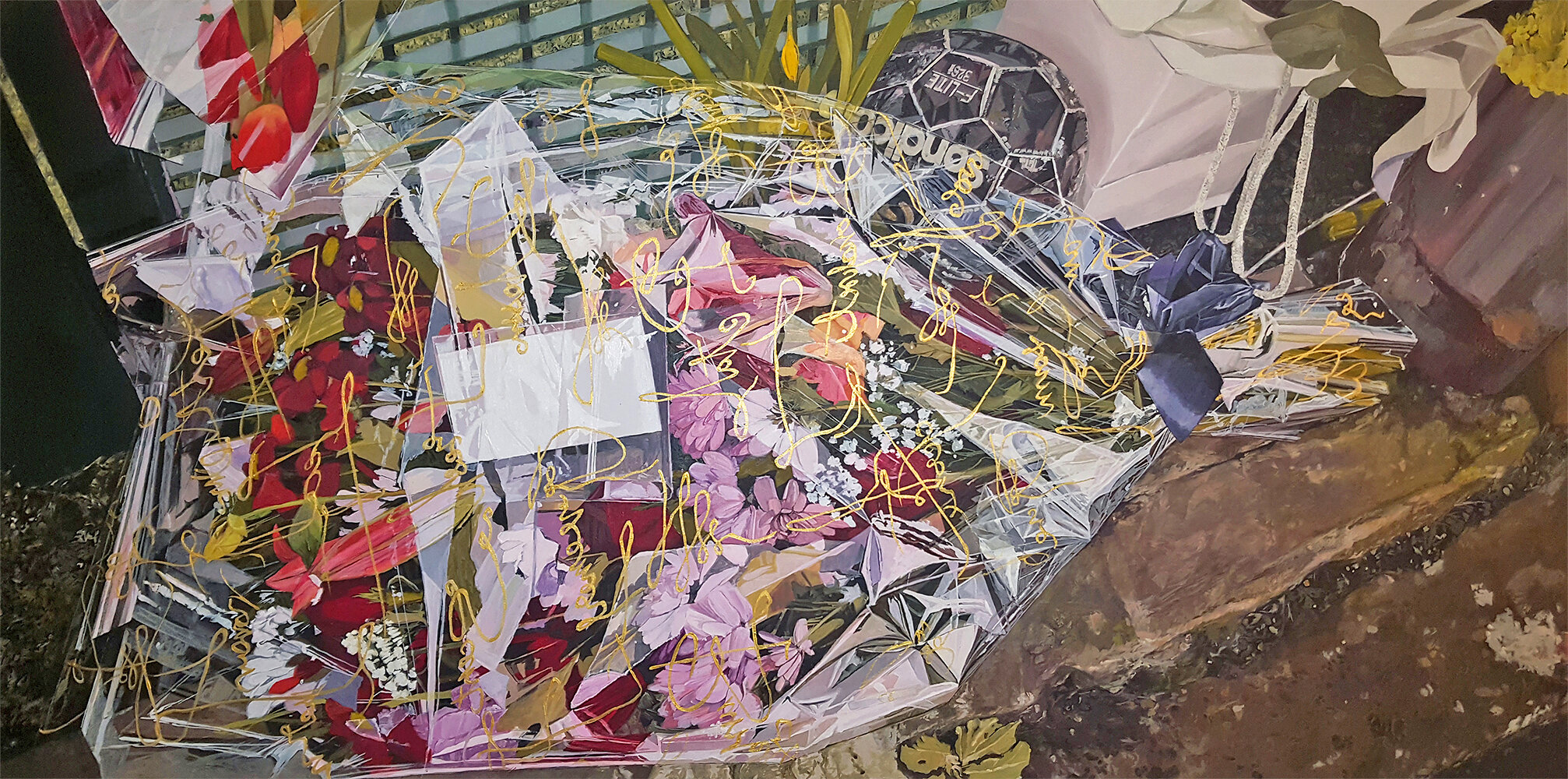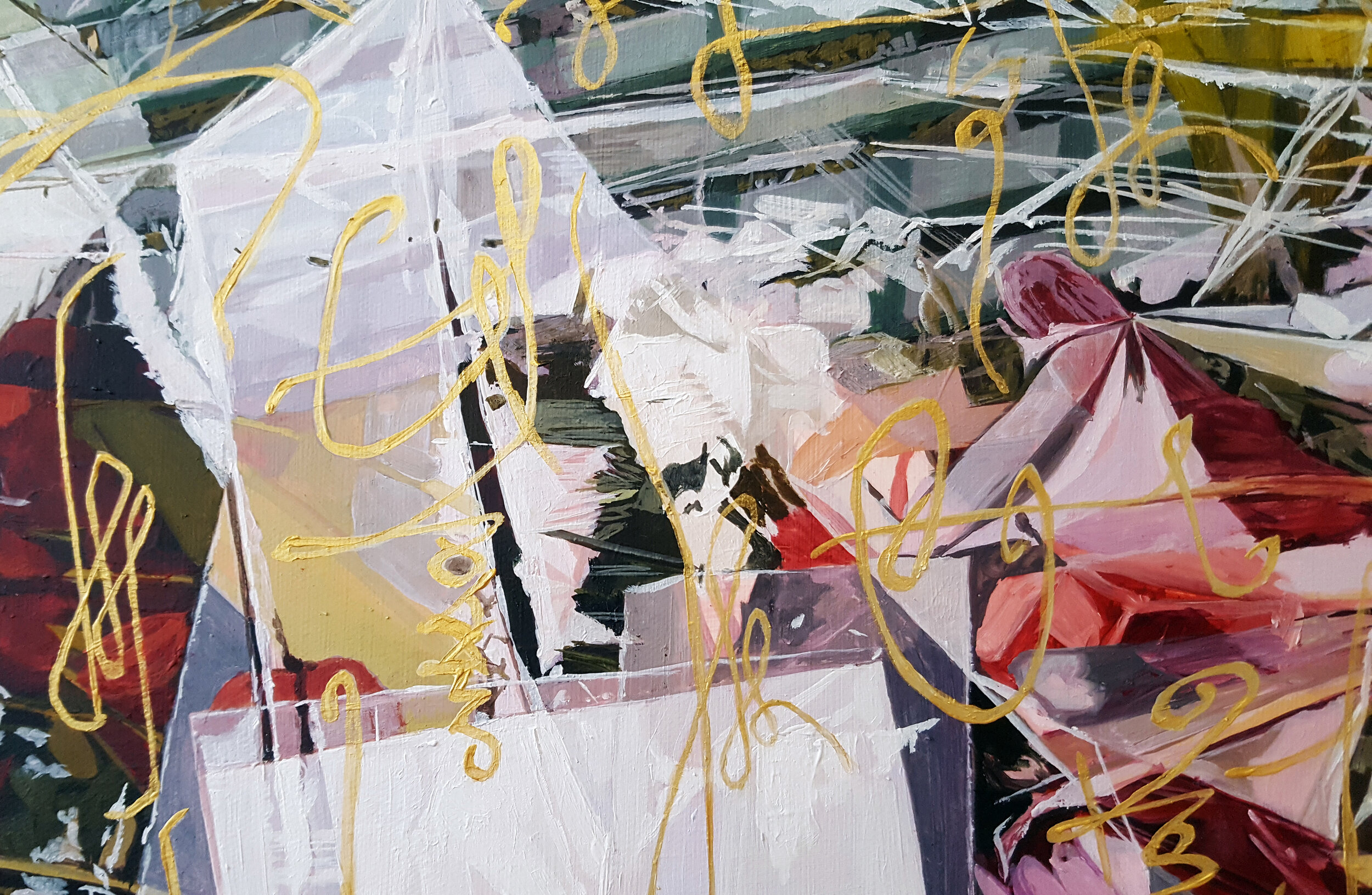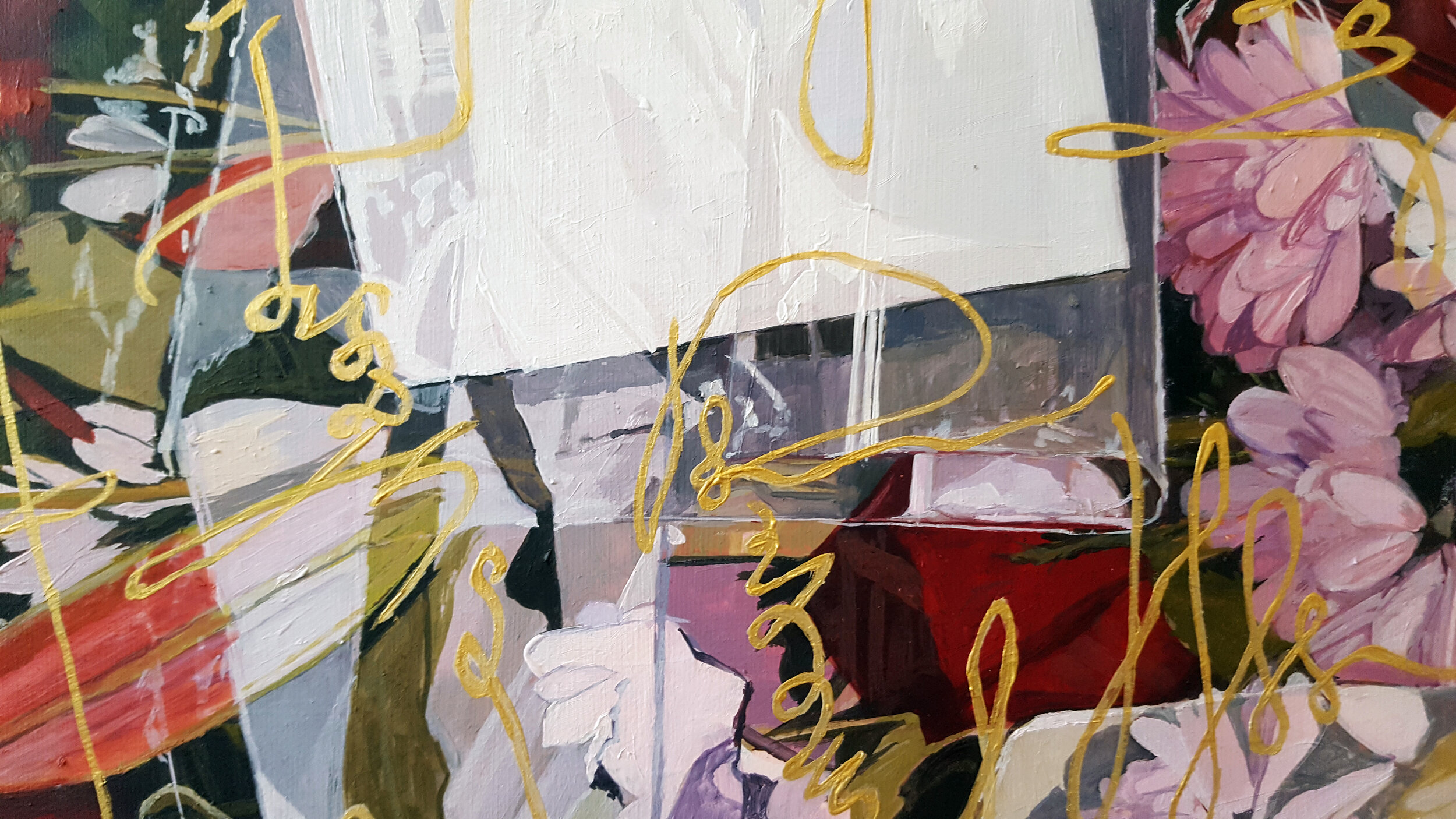Illuminated Cellphone
Whose lives count as lives? And, finally, what makes for a grievable life? Despite our differences in location and history, my guess is that it is possible to appeal to a “we,” for all of us have some notion of what it is to have lost somebody.
— Judith Butler, "Violence, Mourning, Politics"
ILLUMINATED CELLOPHANE (FOR KENTISH TOWN)
A wall of wilting flowers and a football sat next to the estate pitch. The Kentish Town community had erected the makeshift memorial for the young man who lost his life to yet another instance of knife crime. As I walk those exact sidewalks each day, Judith Butler’s words come to mind:
“Whose lives count as lives? And, finally, what makes for a grievable life? Despite our differences in location and history, my guess is that it is possible to appeal to a “we,” for all of us have some notion of what it is to have lost somebody.”
Memorials need to weather the elements like our own bodies do, and hands need to make physical the palpable grief. Painting has long grappled with the tenuous separation of life and death with echoes of memento mori. Taking a photograph captures a passing moment; painting allows me to elongate that moment—which can then be shared beyond me as this particular moment belongs to all of Kentish Town.
Decaying flowers (already dead) are encased in cheap, disposable cellophane—separating their thorns from the crinkling grasp of their holder. To what extent do we want to engage with what feels like nihilism and life’s vanity? The faux gold sits atop the cellophane, a visual signal of its separating presence. The painting itself has multiple layers: a vermillion underpainting, overpainting, glazing for cellophane highlights, and the final gold. Each layer complicates, distorting focus just as the cellophane itself obscures what we hold in our arms to then place in memoriam. Do we remove the cellophane layer?








